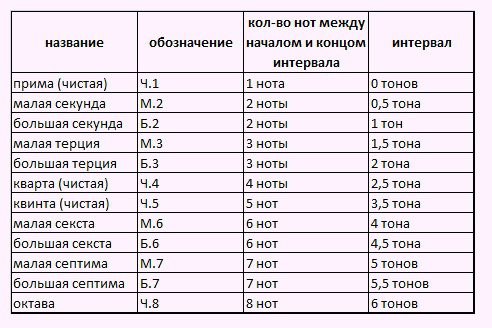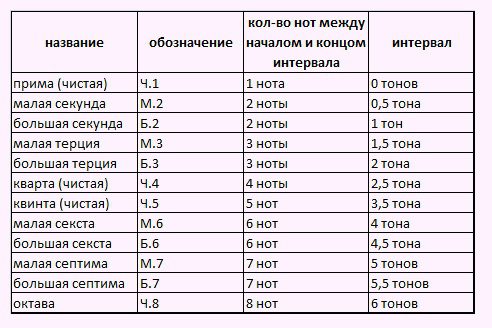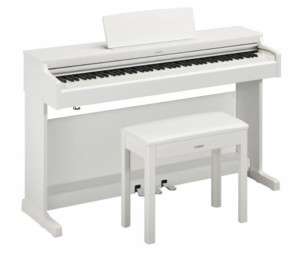
Musical intervals – first introduction
Contents
Intervals in music play a very important role. Musical intervals – the fundamental principle of harmony, the “building material” of a work.
All music is composed of notes, but one note is not music yet – just like any book is written in letters, but the letters themselves do not carry the meaning of the work. If we take larger semantic units, then in texts these will be words, and in a musical work these will be consonances.
Harmonic and melodic intervals
The consonance of two sounds is called, and these two sounds can be played either together or in turn, in the first case the interval will be called, and in the second -.
What means ? The sounds of a harmonic interval are taken simultaneously and therefore merge into a single consonance – which can sound very soft, or maybe sharp, prickly. In melodic intervals, sounds are played (or sung) in turn – first one, then the other. These intervals can be compared to two connected links in a chain – any melody consists of such links.
The role of intervals in music
What is the essence of intervals in music, for example, in melody? Let’s imagine two different melodies and analyze their very beginning: let them be well-known children’s songs
Let’s compare the beginnings of these songs. Both melodies begin with the note , but develop further in completely different ways. In the first song, we hear as if the melody is rising up the steps in small steps – first from note to note, then from note to, etc. But at the very first words of the second song, the melody immediately jumps upward, as if jumping over several steps at once (). Indeed, they would fit quite calmly between the notes.
Moving up and down steps and jumping, as well as repeating sounds at the same height is all musical intervals, from which, ultimately, the total is formed.
By the way. If you decided to study musical intervals, then you probably already know the notes and now understand me well. If you don’t know sheet music yet, check out the article “Note reading for beginners.”
Interval Properties
You already understand that an interval is a certain distance from one note to another. Now let’s figure out how this distance can be measured, especially since it’s time to find out the names of the intervals.
Each interval has two properties (or two values) – this Step value depends on whether it is – one, two, three, etc. (and the sounds of the interval themselves also count). Well, the tonal value refers to the composition of specific intervals – the exact value is calculated. These properties are sometimes called differently – but their essence does not change.
Musical intervals – names
To name intervals, use , the name is determined by the properties of the interval. Depending on how many steps the interval covers (that is, on the step or quantitative value), the names are given:
These Latin words are used to name intervals, but it is still more convenient to use for writing. For example, a fourth can be designated by the number 4, a sixth by the number 6, etc.
There are intervals. These definitions come from the second property of the interval, that is, tonal composition (tone or qualitative value). These characteristics are attached to the name, for example:
Pure intervals are pure prima (ch1), pure octave (ch8), pure fourth (ch4) and pure fifth (ch5). Small and major are seconds (m2, b2), thirds (m3, b3), sixths (m6, b6) and sevenths (m7, b7).
The number of tones in each interval must be remembered. For example, in pure intervals it’s like this: there are 0 tones in a prima, 6 tones in an octave, 2,5 tones in a fourth, and 3,5 tones in a fifth. To repeat the topic of tones and semitones, read the articles “Alteration Signs” and “What are the names of the piano keys”, where these issues are discussed in detail.

Intervals in music – summary
In this article, which could be called a lesson, we discussed intervals in music, found out what they are called, what properties they have, and what role they play.

In the future, you can expect to expand your knowledge on this very important topic. Why is it so important? Yes, because music theory is the universal key to understanding any musical work.
What to do if you are unable to understand the topic? The first is to relax and read the entire article again today or tomorrow, the second is to look for information on other sites, the third is to contact us in the VKontakte group or ask your questions in the comments.
If everything is clear, then I’m very happy! At the bottom of the page you will find buttons for various social networks – share this article with your friends! Well, after that you can relax a little and watch a cool video – pianist Denis Matsuev improvises on the theme of the song “A Christmas Tree Was Born in the Forest” in the styles of different composers.
Denis Matsuev “A Christmas tree was born in the forest”



